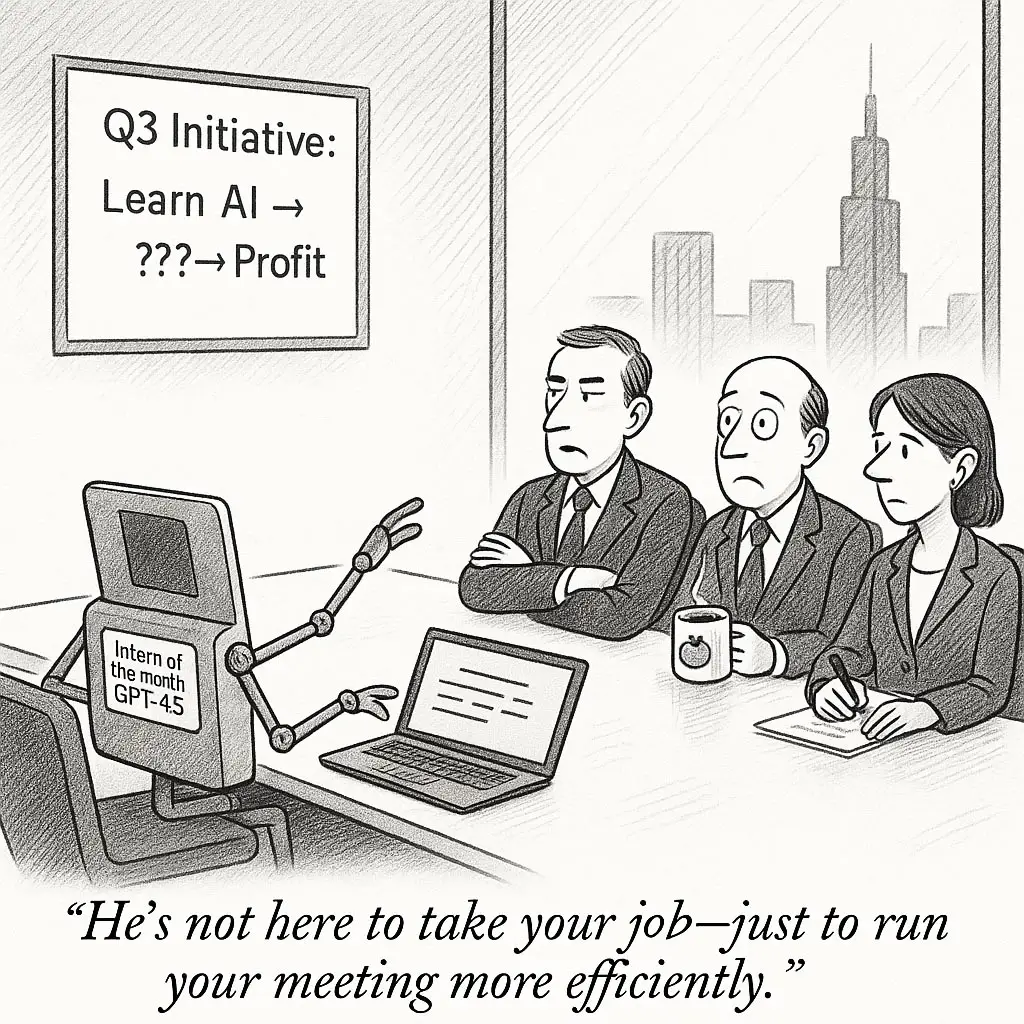When people ask, “How do you compete with AI?” most hear a threat. But there’s a quieter, more dangerous question under the surface:
What happens if your competitors get good at it – and you don’t?
HubSpot’s CTO, Dharmesh Shah, posed that first question as a kind of Rorschach test. One-third of people saw a fight. Two-thirds saw a tool. Want to guess who wins that race?
Not the paranoid. Not the passive. The curious.
Here’s what your leadership team, well, your whole organization needs to understand: This isn’t a game of replacement. It’s a game of amplification. And the players who learn how to blend human instincts with machine capability? They don’t just stay relevant. They leap ahead.
Let’s unpack this shift before you get leapfrogged.
How AI actually works isn’t just tech trivia – it’s a power unlock
Here’s what AI is not: magic, sentient, or a replacement for your best thinker.
Here’s what it is: a massively overeducated, tireless intern with access to everything… except your context.
You feed it prompts. It returns predictions. Each word is chosen like a chess move, one probability at a time. It’s autocomplete with a PhD in linguistics, statistics, and everything Reddit ever screamed into the void.
But here’s the kicker: It’s not trained on your business. Not your systems, your strategy, not your clients.
If AI doesn’t know your business, it’s not brainstorming and improving, It’s making stuff up, with flair.
You have to teach the intern. Or better yet, you build tools that do.
The edge isn’t in the tool. It’s in how you think with it.
Most teams fall into one of two camps:
- The cautiously dismissive (“We don’t trust the outputs yet”)
- The recklessly hopeful (“Let’s just AI all the things”)
Both are wrong.
The real game? Curiosity at scale.
That means:
- Running small experiments
- Assigning someone (yes, a human) to track what works
- Training your team to think like prompt engineers
- Recognizing that writing prompts is the new writing code
Your 14-year-old intern probably knows how to use GPT better than your CMO. That’s a crisis.
Your role isn’t being replaced. You’re being upgraded – if you can keep up.
Let’s get blunt. AI will take some jobs. Not because it wants to. But because someone using it will do that job faster, better, cheaper, and louder.
But the real threat isn’t AI replacing humans. It’s humans staying the same while the game moves on.
You’re in the Tuesday marketing sync. Move-ins are soft. Tours are down. Your events aren’t converting like they used to. Someone suggests revamping the lead nurture sequence, again. But no one has time to write it. Your in-house team’s buried in flyers, direct mail, and a website update.
Then someone says, “Should we try AI for this?”
You nod. “Yeah, maybe worth trying.”
But it fizzles. Because trying means owning. And no one’s ready to steer that bus.
Now skip ahead three weeks. A nearby competitor rolls out a new campaign – fully personalized, AI-assisted follow-ups, blog posts that actually sound human, landing pages that rank and convert, social content tuned to each buyer stage. They didn’t hire a new team. They just handed the reins to one that knows how to use the tools, and already did the reps.
Their content’s trained on real resident stories. Their FAQs feed their search visibility. Their messaging is fast, on-brand, and scalable. It looks effortless. It’s not.
Because this isn’t just plug-and-play. This takes calibration. Judgment. Rewrites. Prompts that don’t sound like prompts.
It’s not just about using the tool. It’s about knowing how to make it work for you.
They didn’t “try AI.” They built a system with someone who knows how to drive it.
If you’re still deciding whether to explore AI, they’re already six moves in.
You don’t have to master AI overnight. But you probably need someone on your side who has. Let’s talk.
Dharmesh calls it “you to the power of AI.” We call it compounding leverage. You can delegate the tedious parts and supercharge the creative ones. You can build once and scale infinitely. But only if you stop seeing AI as an app and start treating it like an amplifier of intent.
Use it wrong, and it makes your mess bigger. Use it right, and it turns your idea whisper into a market roar. You could wait for your competitors to figure this out. Or you could start running smarter right now, and we can help.
TLDR:
If your first instinct around AI is fear, good. That means you’re paying attention. But don’t freeze there. The real winners are the ones who start using AI with small bets, clear eyes, and relentless curiosity. Because it’s not AI vs. you. It’s you vs. people who use it better.
Related Posts
AI Won’t Replace You. The Agents Who Use It Will
AI Isn’t Replacing You. It’s Replacing the Excuses



